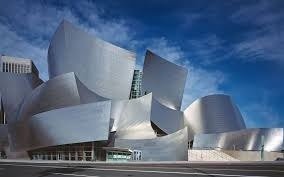[URL=http://www.radikal.ru][IMG] [/IMG][/URL
[/IMG][/URL
Architecture the art of building in which human requirements and construction materials are related so as to furnish practical use as well as an aesthetic solution, thus differing from the pure utility of engineering construction. As an art, architecture is essentially abstract and nonrepresentational and involves the manipulation of the relationships of spaces, volumes, planes, masses, and voids. Time is also an important factor in architecture, since a building is usually comprehended in a succession of experiences rather than all at once. In most architecture there is no one vantage point from which the whole structure can be understood. The use of light and shadow, as well as surface decoration, can greatly enhance a structure.
The analysis of building types provides an insight into past cultures and eras. Behind each of the greater styles lies not a casual trend nor a vogue, but a period of serious and urgent experimentation directed toward answering the needs of a specific way of life. Climate, methods of labor, available materials, and economy of means all impose their dictates. Each of the greater styles has been aided by the discovery of new construction methods. Once developed, a method survives tenaciously, giving way only when social changes or new building techniques have reduced it. That evolutionary process is exemplified by the history of modern architecture, which developed from the first uses of structural iron and steel in the mid-19th cent.
Until the 20th cent. there were three great developments in architectural construction—the post-and-lintel, or trabeated, system; the arch system, either the cohesive type, employing plastic materials hardening into a homogeneous mass, or the thrust type, in which the loads are received and counterbalanced at definite points; and the modern steel-skeleton system. In the 20th cent. new forms of building have been devised, with the use of reinforced concrete and the development of geodesic and stressed-skin (light material, reinforced) structures.
See also articles under countries, e.g., American architecture; styles, e.g., baroque; periods, e.g., Gothic architecture and art; individual architects, e.g., Andrea Palladio; individual stylistic and structural elements, e.g., tracery, orientation; specific building types, e.g., pagoda, apartment house.
Sort: Trending